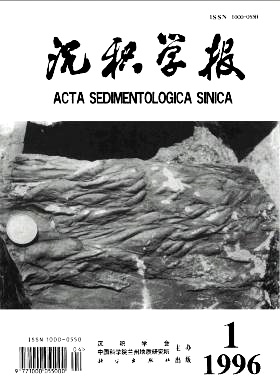Study on Sea-level Change of Cambrian in Northern Tarim Basin
- Received Date: 1994-12-10
- Publish Date: 1996-03-10
-
Key words:
- sea-level change /
- relative change of coastal onlay /
- relative change of water depth Cambrian /
- /
Abstract: The study on sea-level change in geological history is one of the most important aspects in sedimentology and paleooceanography, and it is also the theoretical basis and key content of sequence stratigraphy. With the development of geoscience toward system science,the study of global sea level change has become an important frontier problem. In the study of sedimentology, we used to discuss the sea level change with the relative change of water depth in outcrop section, but the evidence from the study of seismic stratigraphy and sedimentology of Cambrian in northern Tarim Basin indicates that the relative change of water depth in outcrop section is quite different from the relative change of coastal onlap reflecting the relative sea level change. The relative change of coastal onlap got from the seismic stratigraphic research shows steady rising in Cambrian, but the relative change of water depth in outcrop section is gradually falling. Thus, it can be seen that although the relative change of water depth got from the study of outcrop section has a great deal to do with sea level change, it can not stand for sea level change completely. The reason is that the relative change of water depth is not only controlled by sea level change, and it is also controlled by basement subsidence and sediment supply, so under the condition of the same sea level change, the relative change of water depth will be quite different in the different site with different velocity of basement subsidence and sediment supply. Even if the basement subsidence is uniform in the basin, it will also change from place to place because of the different velocities of sediment supply (or productivities).Computer simulating results confirm that it is entirely possible that whether sea level is rising or falling, the water depth will decrease on the very shallow carbonate platform where the basement subsidence is relatively slow. This is because the carbonate productivity is very high and the production of carbonate sediments can keep pace with the increase of accommodation at all time, and even can exceed it at some time. As a result, the keeping-up carbonate system will generate,resulting in the decrease of water depth. In order to understand the rule of sealevel change from the outcrop section, the tendency of sea-level change has been reconstructed with the mathematical method and the developed Fischer Plot, and the results show that the reconstructed tendency of sea-level change is the same as that of the change of coastal onlap reflecting the relative change of sea-level change, which proves that the sea-level change has an important control over depositional sequences, but it is difficult to evaluate the sealevel change only on the relative change of water depth from outcrop section. It is only after removing the effects of basement subsidence and sediment productivity that the correct information of sea-level change can be obtained from the outcrop section.
| Citation: | Yu Bingsong. Study on Sea-level Change of Cambrian in Northern Tarim Basin[J]. Acta Sedimentologica Sinica, 1996, 14(1): 33-39. |






 DownLoad:
DownLoad: